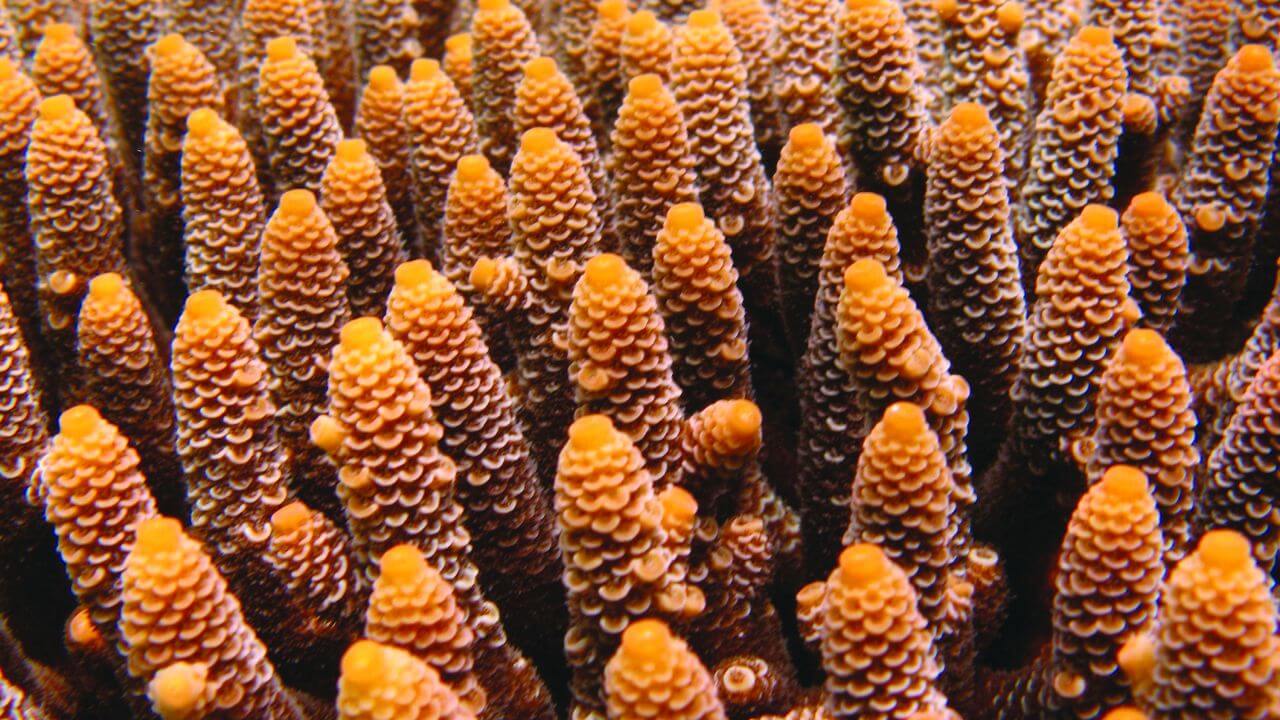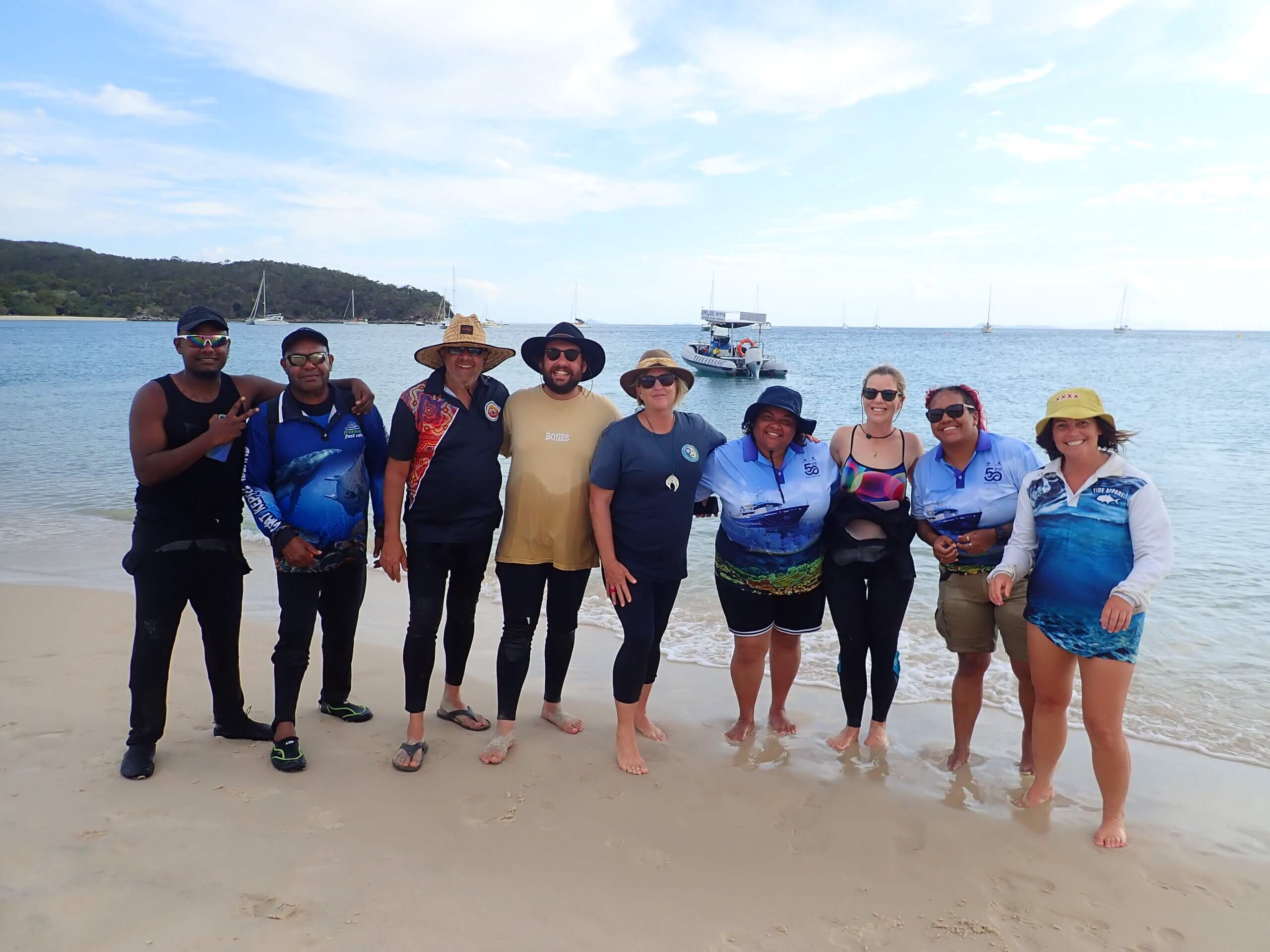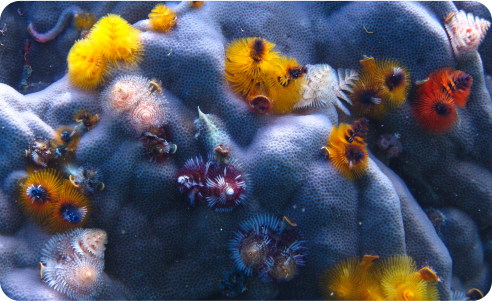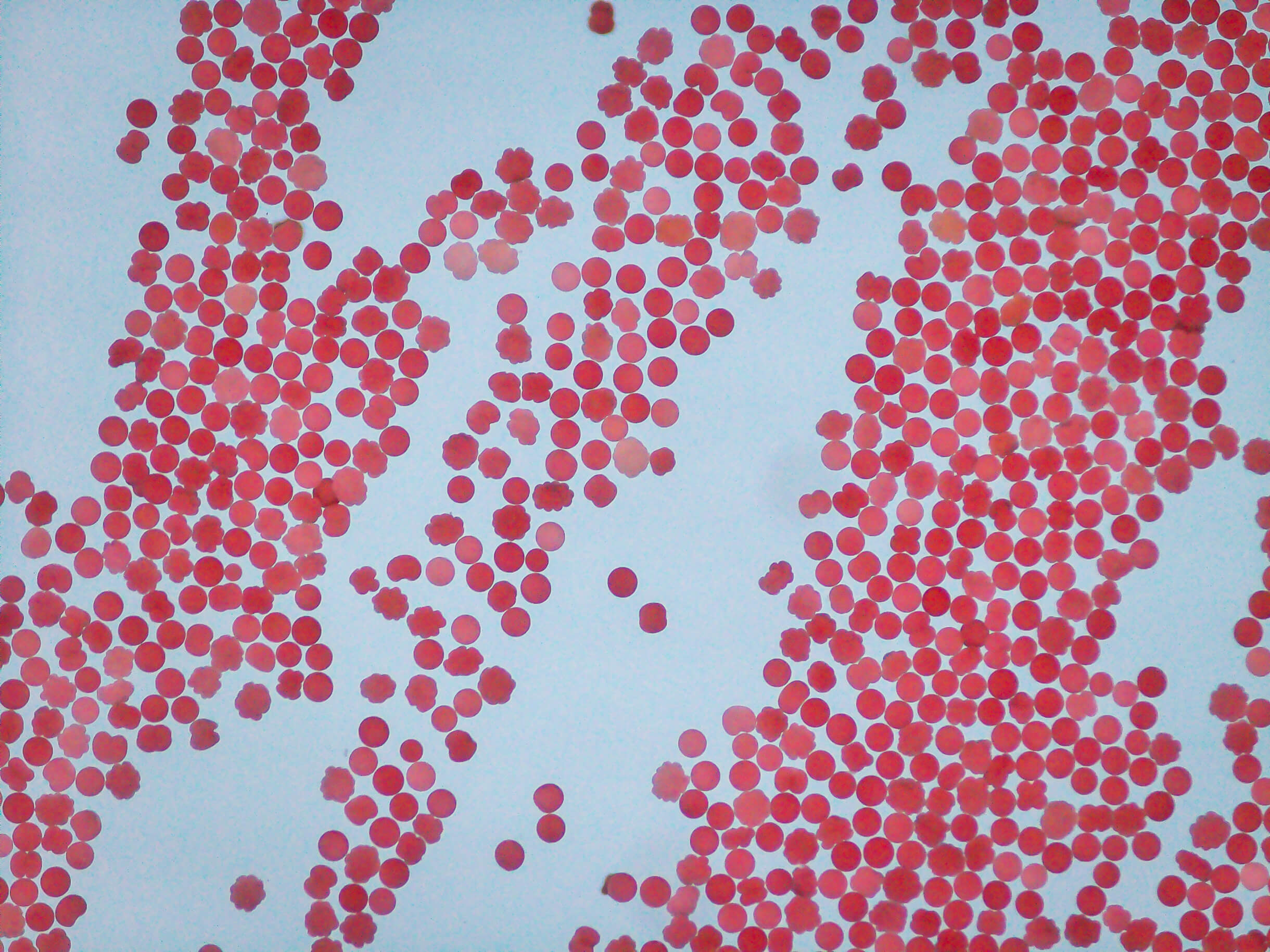
CULTURAL SAFETY IN BIO-BANKING
Preserving the biodiversity of the Reef
Workshop on Woppa (Great Keppel Island), attended by Woppaburra Traditional Owners (Joseph Geas Junior, Joseph Geas Senior, Harry (Sonny) Van Issum, Jackson Van Issum, Shelly McArdle, meaghan Cummins and Jamiga Cummins) and RRAP researchers (Tania Kenyon and Karen Eigeland). Credit: Patrick Bruce
Story contributed by the Great Barrier Reef Foundation.
The Great Barrier Reef may never again have as much biodiversity as it does right now and preserving it is critical. It is this genetic diversity that determines a coral’s ability to thrive and survive, for example, how well it can withstand heat or disease, how much energy it can produce, or how large it will eventually grow.
Every coral has subtle differences that make it unique and it is important to have diversity in the whole population for reefs to be healthy and thrive. So too is the ability to restore damaged coral reefs, as the level of coral cover declines due to a changing climate and other pressures. To help with future restoration, researchers are working hard to establish banks of cryopreserved corals and their reproductive material for the future.
Restoring local areas of damaged coral reefs by growing key coral species from stored
sperm and eggs and transplanting them back onto the Reef is a possibility, but first we need to collect and store valuable species.
What’s involved in cryopreserving corals?
Coral cryopreservation is the process of preserving coral cells and tissues at very low temperatures. Samples of egg and seed bundles are collected from spawning corals. After the seed are separated from eggs, they are immediately cryopreserved and transferred to liquid nitrogen at -196 degrees Celsius.
Frozen coral seed, along with fertilised eggs that have turned into larvae, are then placed in travel-safe containers of nitrogen vapour and shipped to seed banks at Taronga Zoo Sydney on Cammeraigal Country, and at Taronga Western Plains Zoo in Dubbo on Wiradjuri Country.
There they are stored in biosecure and alarmed chambers of liquid nitrogen at -196 degrees Celcius. At that temperature, metabolic processes stop and the cells can be kept frozen in that state indefinitely. When they’re needed for future reef restoration efforts, different types of warming and thawing methods are used including laser warming technology for coral larvae.
A permanent record of Traditional Owner ownership is maintained in the digital database for each sample held at Taronga.
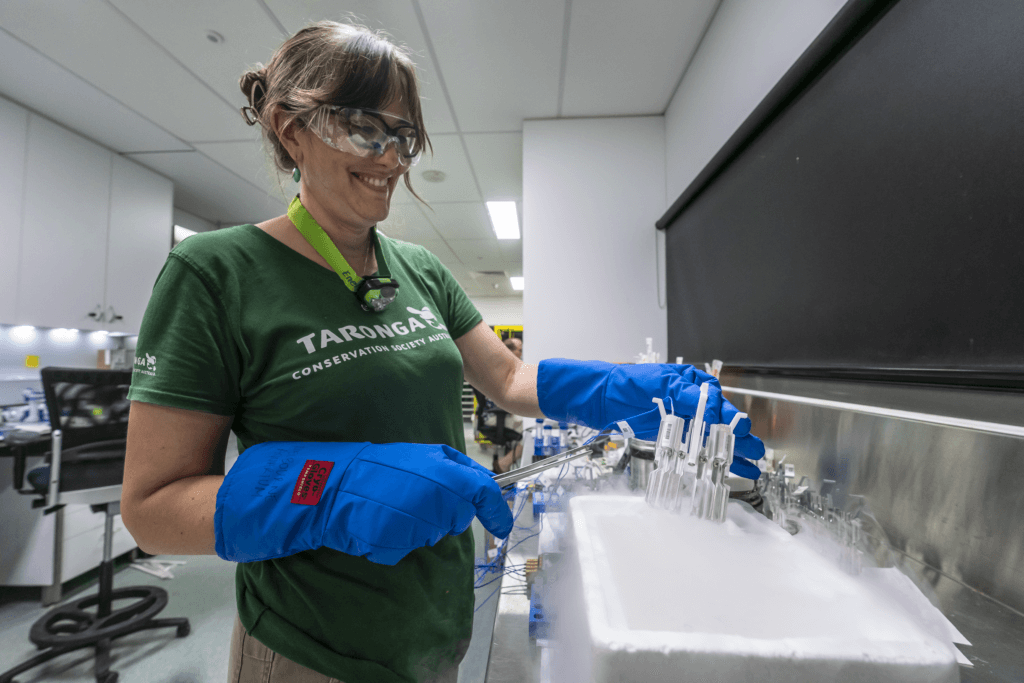
How do we keep coral samples safe?
Culturally, corals will always remain a part of the Country from where they were collected, even after they are relocated. Culturally safe material transfers can only occur with the consent of both sending and receiving Traditional Owner groups.
“We need to enable genuine partnerships in research and action to support Indigenous-led decision making in marine environments. That’s why we’re focused on enabling knowledge exchange, slowly building rapport and trust, focussing on the importance of free and prior informed consent and the imperative to acknowledge and protect Indigenous Cultural and Intellectual Property.”
— Bob Muir, Woppaburra Elder and Traditional Owner, and Indigenous Partnerships Team at AIMS
Cultural obligations must be carefully discussed and agreed between the Traditional Owner groups farewelling and receiving living coral material. If cultural protocol is not followed, the transfer of this living material will be culturally unsafe and may present bad medicine for all (Traditional Owners and non-Indigenous researchers and organisations).
To ensure a culturally safe transfer of material, the cryopreserved coral material is culturally farewelled from sea Country and welcomed to Taronga’s facility by relevant Traditional Owner representatives.

It was only through ongoing discussion and collaboration between Traditional Owners, First Nations representatives and scientists that this process was shared, and the beginnings of a new culturally safe biobanking protocol were formed. Now, cryopreservation projects under the Reef Restoration and Adaptation Program can ensure that precious coral samples are safe and retain their links to Country in perpetuity.
“It provides a rich opportunity for two-way learning, for example around culturally safe practices for biobanking of coral samples from sea Country, and we are fortunate to work with the Traditional Owners and other First Nations Peoples in this area.”
— Dr Justine O’Brien, Taronga Coral Cryopreservation Team
While this is the first time such cultural practice has been sought and followed for the transfer of living cryopreserved material to Taronga, it follows an ancient traditional practice according to Lore. Aboriginal Peoples would never consider moving part of their Country, living or non-living, into or out of another’s Country without consent and attending to cultural obligations. These materials will always remain connected to the Country of origin including the people and all living, non-living, tangible and non-tangible elements of Country.

